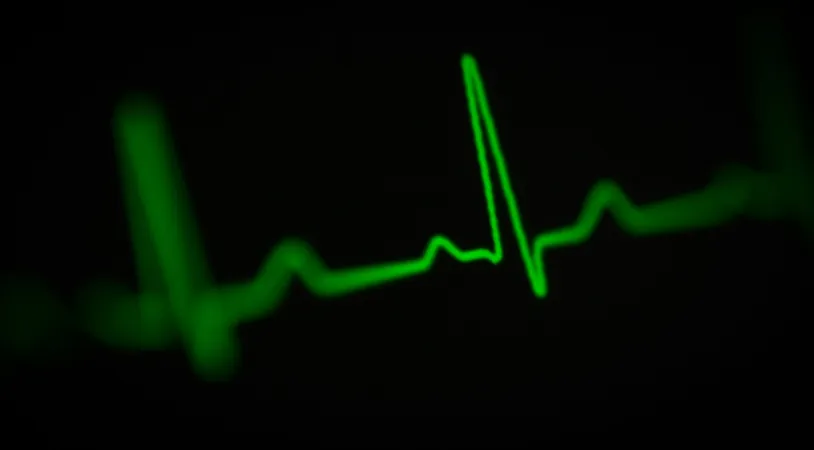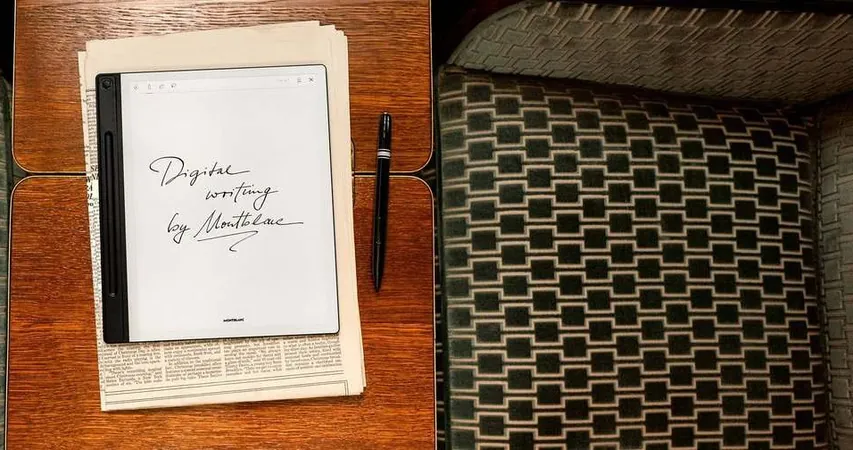
Revolutionizing Heart Health: Meet MemSAM, the Cutting-Edge AI Tool Transforming Echocardiography
2025-07-11
Author: Jia
Cardiovascular Diseases: A Growing Concern in Hong Kong
In Hong Kong, cardiovascular diseases are taking center stage as a leading health threat, compelling many to undergo regular heart check-ups for early detection and management. Central to these assessments is echocardiography—a non-invasive imaging technology that provides crucial insights into heart function, pivotal for timely medical intervention.
The Challenge of Traditional Echocardiography
Despite its importance, interpreting echocardiography images manually is no cakewalk. Medical professionals grapple with speckle noise and ambiguous structural boundaries, making accurate diagnosis time-consuming and highly specialized. As a result, these heart check-ups are seldom included in standard annual health screenings.
Introducing MemSAM: The Game-Changer in Medical Imaging
Enter Prof. Harry Qin and his research team at The Hong Kong Polytechnic University. They've unveiled MemSAM, a groundbreaking model designed to transform echocardiography video segmentation. This innovative tool taps into the Segment Anything Model (SAM) from Meta AI, customizing it to meet the demanding standards of medical imaging.
How MemSAM Works: A New Approach to Video Segmentation
MemSAM introduces a revolutionary, temporal-aware, noise-resilient prompting scheme for echocardiography video segmentation. While traditional SAM models excel in natural image segmentation, applying them directly to medical videos poses challenges because of temporal inconsistencies and noise. MemSAM overcomes these hurdles with a space-time memory mechanism that captures both spatial and temporal data, ensuring consistent and accurate segmentations across multiple video frames.
A Solution to Healthcare Delays and Expert Shortages
The arrival of MemSAM has the potential to alleviate both financial burdens and the heavy reliance on specialized expertise in the field of cardiac imaging. By simplifying the cardiac assessment process, MemSAM could pave the way for routine inclusion in health screenings, heightening accessibility and promoting early detection.
Tackling the Difficulties of Echocardiography Video Segmentation
Segmenting echocardiography videos presents a multitude of challenges. From overwhelming speckle noise to the intricate movement dynamics of the heart, data in these videos often varies greatly from frame to frame. MemSAM's innovative memory reinforcement capability sift through this noise, using predictive masks to enhance segmentation accuracy.
Exceptional Performance with Minimal Annotation Needed
One of MemSAM's standout features is its ability to deliver top-tier performance with far fewer annotations. The labor-intensive nature of annotating such videos often leads to sparse labeling, usually confined to specific key frames. Remarkably, MemSAM functions efficiently in a semi-supervised environment, showing performance on par with fully supervised models while demanding fewer input prompts.
Proven Success: MemSAM's Impressive Testing Results
MemSAM has been rigorously evaluated on public datasets like CAMUS and EchoNet-Dynamic, consistently outperforming existing models. Its capability to maintain high accuracy with minimal prompts is crucial for easing clinical workflows and lightening the load on healthcare professionals.
Behind the Technology: The Innovation of MemSAM
The brilliance of MemSAM stems from merging SAM with cutting-edge memory prompting techniques. SAM is renowned for its robust representation skills; MemSAM has adapted it to tackle the unique challenges posed by medical imaging. Its core innovation lies within a temporal-aware prompting scheme that utilizes memory to preserve consistency across video frames, eliminating the risks of misidentification.
What Lies Ahead: Future Developments for MemSAM
While MemSAM stands as a monumental advancement in echocardiography, future research is set to bolster its robustness, particularly in circumstances where initial frame quality lacks. Researchers are also keen to explore its applications in other medical imaging fields and optimize its computational efficiency, hinting at an exciting future for this transformative technology.


 Brasil (PT)
Brasil (PT)
 Canada (EN)
Canada (EN)
 Chile (ES)
Chile (ES)
 Česko (CS)
Česko (CS)
 대한민국 (KO)
대한민국 (KO)
 España (ES)
España (ES)
 France (FR)
France (FR)
 Hong Kong (EN)
Hong Kong (EN)
 Italia (IT)
Italia (IT)
 日本 (JA)
日本 (JA)
 Magyarország (HU)
Magyarország (HU)
 Norge (NO)
Norge (NO)
 Polska (PL)
Polska (PL)
 Schweiz (DE)
Schweiz (DE)
 Singapore (EN)
Singapore (EN)
 Sverige (SV)
Sverige (SV)
 Suomi (FI)
Suomi (FI)
 Türkiye (TR)
Türkiye (TR)
 الإمارات العربية المتحدة (AR)
الإمارات العربية المتحدة (AR)